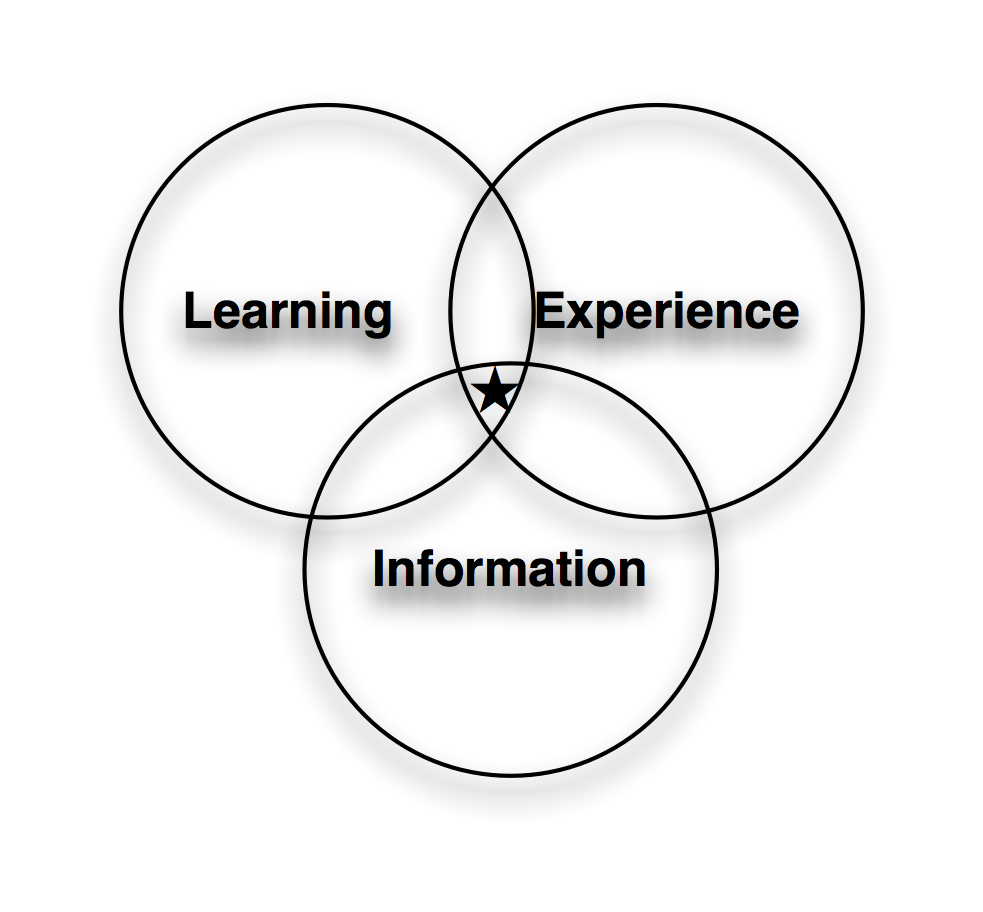As part of the continual rethink about what I offer and to who (e.g. training department rethinks to managers, directors, VPs; experience design reviews/refines to learning teams), my thoughts on learning experience design took a leap. I’ve argued that the skills in Engaging Learning (my book) are the ones that are critical for Pine & Gilmore’s next step beyond their experience economy, the transformative experience economy. But I’ve started to think deeper.
John Seely Brown challenged us at the Learning Irregulars meeting that what fundamentally made a difference was a ‘questing disposition’ found in certain active learning communities. This manifests as an orientation to experimentation and learning. My curiosity was whether it was capable of being developed, as I’m loath to think that the 10% that learn despite schooling :) is inflexible because I believe that more and better learning has a chance to change our world for the better.
I hadn’t finished the article he subsequently sent me (coming soon), but it drove me back to some early thinking on attitude change. I recognize that just learning skills aren’t enough, and that a truly transformative experience subjectively needs to result in a changed worldview, a feeling of new perspectives. This could be a change in attitude, a new competency, or a fundamental change in perspective.
Which brings me back to looking at myth and ritual, something I tried to get my mind around before. I was looking for the Complete Idiot’s Guide to Ritual, and the closest thing I could find is Rapport’s Ritual and Religion in the Making of Humanity, which is almost impenetrably dense (and I’m trained and practiced at reading academic prose!). However, the takeaway is that ritual is hard to design, most artificial attempts fail miserably.
Others have suggested that transformation is at core about movement, which takes me back to ritual. Both a search on transformation and a twitter response brought that element to the surface. The other element that the search found was spirituality (not just religious). Which is not surprising, but not necessarily useful.
Naturally, I fall back to thinking from the perspective of creating an experience that will yield that transformational aesthetic, but it’s grounded in intuition rather than any explicit guidance. Still, I think there’s something necessary in the perspective that skills alone isn’t enough, and as I said before, as much of our barriers may be attitude or motivation as knowledge and skills.
I’ve skimmed ahead in JSB’s article, and can see I need a followup post, but in the interim, I’d welcome your thoughts on designing truly transformative experiences, not just learning experiences.
 I‘m leery of the term instructional design, as that label has been tarnished with too many cookie cutter examples and rote approaches to make me feel comfortable (see my Broken ID
I‘m leery of the term instructional design, as that label has been tarnished with too many cookie cutter examples and rote approaches to make me feel comfortable (see my Broken ID